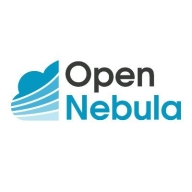


Fugue and OpenNebula are in the competitive realm of cloud management solutions. OpenNebula appears to have an advantage due to its comprehensive features tailored for larger-scale operations, making it a preferred choice for businesses with extensive cloud infrastructure needs.
Features: Fugue provides strong data governance capabilities, helping organizations streamline cloud compliance, along with automation features that enhance cloud management efficiency. OpenNebula addresses advanced scalability, proficiently handling multi-cloud management for various business requirements. Its extensive feature set makes it suitable for larger and more complex cloud infrastructure demands.
Ease of Deployment and Customer Service: OpenNebula is acknowledged for an easy deployment model across public and private clouds, complemented by responsive customer support that ensures a satisfying user experience. Fugue simplifies the setup process mainly focusing on compliance and security, but OpenNebula's deployment versatility and customer service suitability favor businesses with more complicated cloud configurations.
Pricing and ROI: Fugue is noted for its affordability in setup, delivering good ROI for businesses emphasizing compliance with no extensive scalability demands. OpenNebula might involve higher initial setup costs, but its comprehensive functionalities lead to a strong ROI for enterprises requiring flexible and scalable cloud solutions, making it a justified investment for those seeking broad cloud capabilities.


IBM Turbonomic offers automation, planning, and right-sizing recommendations to streamline resource management, improve efficiencies, and optimize costs across virtualized environments and cloud platforms.
IBM Turbonomic is valued for its capability to optimize resource allocation and monitor virtual environments efficiently. It facilitates automated decision-making in VM sizing, load balancing, and cost optimization for both on-premises and cloud deployments. Users can leverage insights for workload placement, ensure peak performance assurance, and effectively right-size across VMware and Azure. The ongoing transition to HTML5 aims to improve visual and navigational ease, while expanded reporting features are anticipated. Opportunities for improved training, documentation, and integrations enhance platform usability and functionality.
What Are the Key Features?In finance, IBM Turbonomic aids in maintaining platform efficiency during market fluctuations. Healthcare organizations leverage its capability for resource optimization during high-demand periods to enhance patient care support. Retailers use it for planning in peak seasons, ensuring resources align with fluctuating demand to maintain performance continuity.
Fugue is an infrastructure-level cloud operating system. It builds, operates, and terminates cloud infrastructure and services and automates the continuous enforcement of declared infrastructure configurations. Fugue completes the DevOps workflow by automating cloud lifecycle management via enforced and versionable infrastructure as code. Fugue is a single source of truth and trust for the cloud.
OpenNebula provides the most simple but feature-rich and flexible solution for the comprehensive management of virtualized data centers to enable private, public and hybrid IaaS clouds. OpenNebula interoperability makes cloud an evolution by leveraging existing IT assets, protecting your investments, and avoiding vendor lock-in.
OpenNebula is a turnkey enterprise-ready solution that includes all the features needed to provide an on-premises (private) cloud offering, and to offer public cloud services.
We monitor all Cloud Management reviews to prevent fraudulent reviews and keep review quality high. We do not post reviews by company employees or direct competitors. We validate each review for authenticity via cross-reference with LinkedIn, and personal follow-up with the reviewer when necessary.